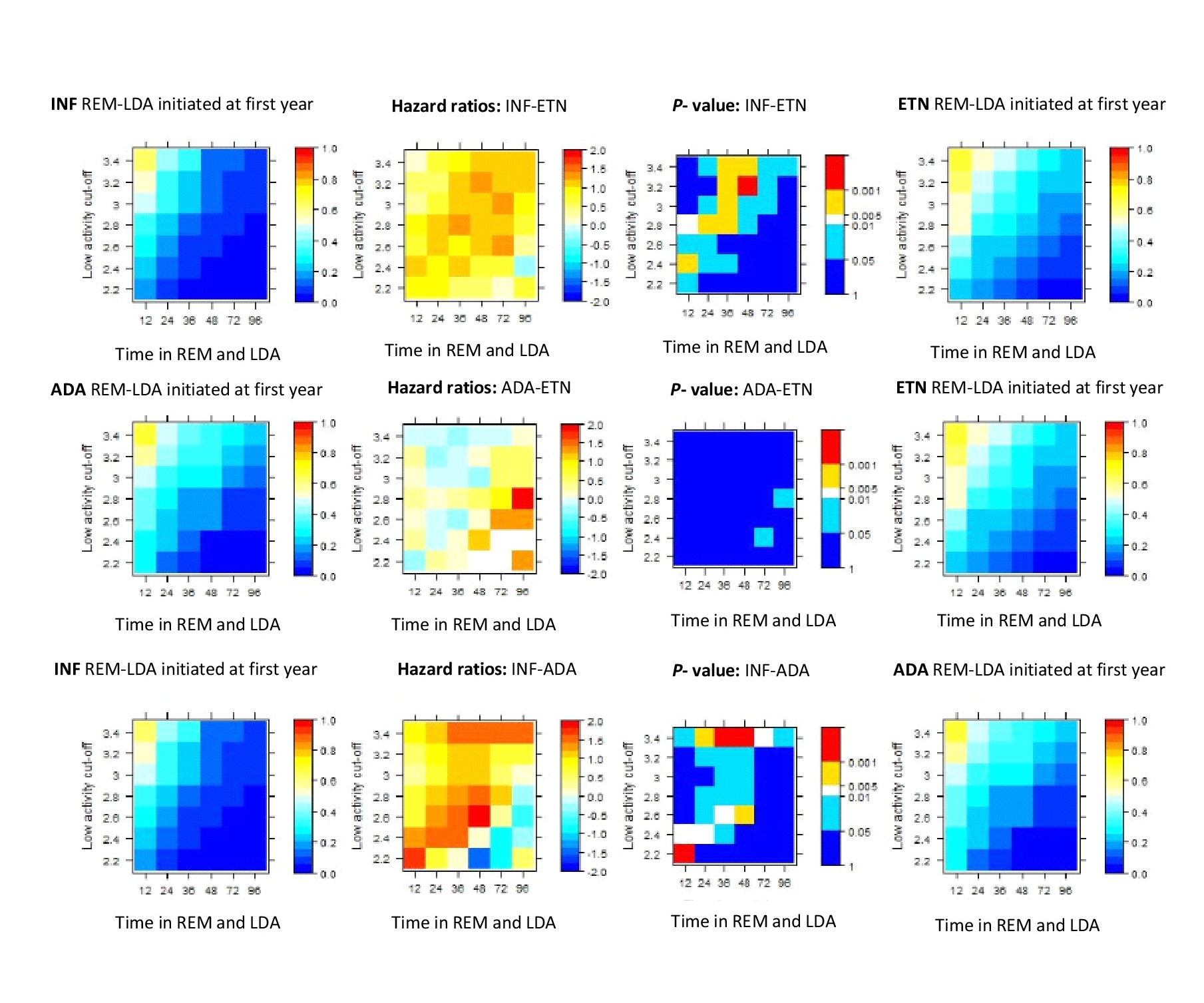Session Information
Session Type: Abstract Submissions (ACR)
Background/Purpose
Biological therapies (BTs) have greatly improved the outcomes in RA patients and nowadays clinical remission (REM) and low disease activity (LDA) have become realistic goals. Only few studies have examined sustained REM and LDA in clinical practice during large periods of time. Our objective was to analyze the duration of clinical REM and LDA in RA patients in clinical practice in a university hospital
Methods
RA patients treated with ≥ 1 anti-TNF (infliximab, etanercept, adalimumab) during the period December’99-March’13 were included. Only those treatments with ≥ 12 weeks of follow-up were analyzed. A large number of data were collected (gender, erosions, nodules, RF, ACPA, disease duration, previous BTs and concomitant corticosteroids/DMARDs…etc). DAS28 score was recorded every 3 months in all patients
DAS28 records for each patient were interpolated to increase time resolution on the disease activity variations. We performed a parametric survival analysis in order to analyze the time until each patient reaches the first sustained period of low activity (LDA and REM). Survival curves were analyzed according to (i) DAS28 threshold that determines a low activity, (ii) minimum period of time in which one patient must be below DAS28 threshold to be considered as sustained low activity. DAS28 thresholds were 2.6 for REM and 3.2 for LDA. The periods to consider sustained low activity were 12, 24, 48 and 96 wks. The Cox regression model was used to evaluate differences in survival times. To analyze the differences between anti-TNFs, the model included DAS28 at baseline, gender and disease duration
Results
222 RA patients were included (87% female, 78% erosive, 75% RF (+), 77% ACPA (+)). 452 BTs met the inclusion criteria and were analyzed. In the global survival analysis we found that 44%, 20% and 10% of patients started a sustained REM period of at least 12, 24 and 96 wks during the first year of treatment. The analysis stratified by clinical variables showed that the absence of erosions was associated with sustained REM for periods longer than 48 weeks (P-value=7.94e-03; HR=0.49[0.32-0.76]). The differential analysis between anti-TNFs showed higher clinical remission rates in patients treated with Etanercept (ETN) compared to infliximab when longer periods were analyzed. Large periods of sustained LDA were also associated to ETN (P-value=8.1e-04; HR=2.42 [1.57-3.73]). Figure 1 shows heat maps representing (1) DAS28 for each treatment and time in low activity (external columns), (2) comparative analysis between treatments (central columns)
Conclusion
In our series of RA patients treated with anti-TNF therapies it was observed that 20% of patients initiate sustained clinical remission for at least 24 weeks during the first year of treatment. Patients treated with ETN are more likely to reach large periods of clinical remission and low disease activity measured by DAS28 score
Disclosure:
G. Avila,
None;
A. Alonso,
None;
M. A. López-Lasanta,
None;
A. Pluma-Sanjurjo,
None;
C. Diaz,
None;
S. Marsal,
None.
« Back to 2014 ACR/ARHP Annual Meeting
ACR Meeting Abstracts - https://acrabstracts.org/abstract/sustained-rheumatoid-arthritis-remission-and-low-disease-activity-analysis-of-13-years-of-follow-up-in-clinical-practice/

